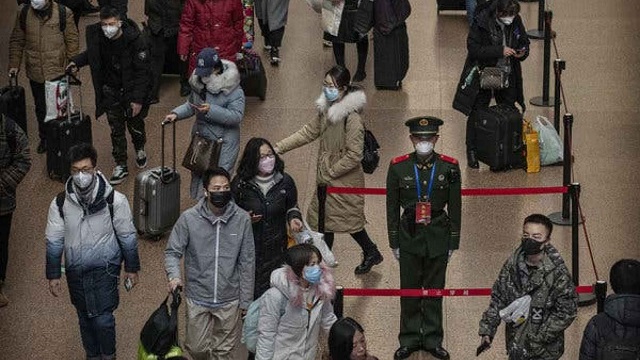The Scale of the Chinese Lockdown — What to make of these scary figures?

The official death toll from the Covid-19/coronavirus now stands at over 2,500 people. There are over 80,000 cases worldwide.
The people I’ve talked to about this epidemic fall into two camps.
Those in the first camp say that this needs to be put into perspective, the number of people who die each year from the flu dwarf the number of coronavirus deaths and it is likely that survival rates will be much better in a first-world, Western health system where the doctors aren’t in fear of the secret police when they say that there is something wrong.
Those in the second camp say that we can’t trust any of the numbers coming out of China, that it is worrying that there seem to be cases cropping up in countries around the world, and that China would not lock down half of its country for a disease that is less deadly than the flu.
“But Marcus!” I hear you say, “Don’t use hyperbole for effect! China hasn’t locked down half of its country!”
Well, according to this report from CNN, I am not exaggerating that much. Almost half of China’s 1.3 billion-strong population remain subject to varying forms of travel restrictions and other quarantine measures. Or, to put it another way, some 780 million people are living under some form of restrictive movement. This is an unbelievably large number.
These restrictions are in place across all of Hubei, the northeastern province of Liaoning, as well as Beijing and Shanghai. Now, these restrictions are not uniform and range from self-quarantine (also known as my normal Friday night … thank you, yes I’m here all week – try the veal) to limits on who can come and go from neighbourhoods.
Some of the restrictions are very strict: Wuhan, Huanggang, Shiyan and Xiaogan (the four cities at the epicenter of the outbreak in Hubei province) have completely sealed off all residential complexes and communities and the use of non-essential vehicles is banned. Residents have food and other necessities delivered to them because they are not permitted to leave their homes. (Apparently online gaming is surging in China at the moment…)
This is all having a massive effect on the Chinese economy. I saw a graph based on shipping that showed that imports to China were down a third and exports from China were 50 percent below their post-Chinese New Year historical averages. For a country that is heavily dependent on its economic growth to distract its citizens attention from its horrific human rights abuses, restricting half of its citizens’ movements in some degree seems an overreaction to what is apparently less deadly than the flu.
But let us have some optimism!
China has announced that some of the restrictions in Wuhan have been lifted…oh wait, no, it has renounced that announcement and the officials that prematurely announced that easing have been “reprimanded” (and their families have been invoiced for the 5.8mm “reprimand”).
What a wonderful country we have economically bound ourselves to hand and foot.
COLUMN BY
Marcus Roberts
Marcus Roberts is co-editor of Demography is Destiny, MercatorNet’s blog on population issues.
RELATED ARTICLES:
CDC announces first US case of coronavirus with ‘unknown’ origin
Trump offers coronavirus reassurance as he tries to end days of mixed messaging and market free fall
Death is becoming very efficient in Canada
Nigeria must be held to account over Christian persecution
Divided loyalties: the 737 Max warning light glitch
EDITORS NOTE: This MercatorNet column is republished with permission. © All rights reserved.


Leave a Reply
Want to join the discussion?Feel free to contribute!